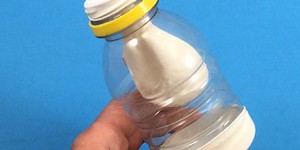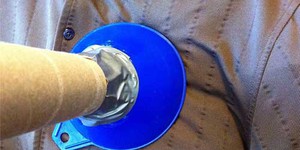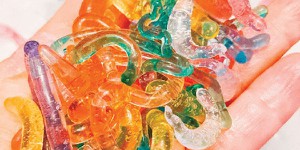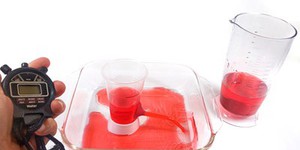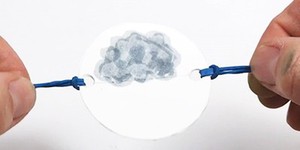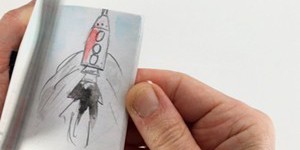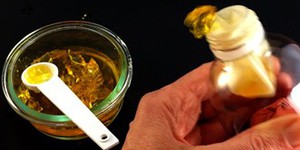Fourth Grade, Human Biology & Health STEM Activities for Kids (17 results)
Isn't the human body incredible? From the complex systems that make it work to the numerous ways we're able to cure illnesses, there are so many fascinating subjects to study when it comes to human biology and health. Are you interested in subjects like how the body works, how best to keep it working, and how to cure everything from a common cough to cancer?
|
Select a resource
Sort by
|
STEM Activity
70 reviews
We breathe a lot—roughly 12 to 16 times a minute for adults and even more for children! Have you ever wondered how the process of breathing works so smoothly? Our lungs allow us to inhale the oxygen our body needs, but they do much, much more. They also allow us to get rid of carbon dioxide, the waste product created in the body, and they play a vital role in singing, shouting and even giggling. In this activity you will make a model of a lung and use it to discover how air flows in…
Read more
STEM Activity
134 reviews
If you write with your right hand, you may also prefer to draw, throw a ball, or eat food with your right hand, but have you ever wondered if your right foot is also more dominant than your left foot? What about your right eye and ear — do you prefer to use them more than your left ones? In this activity, you will get to find out whether people have a sidedness — that is, whether they generally prefer to do activities with one side of their body — and what that might say…
Read more
STEM Activity
44 reviews
Have you ever wondered what happens to the heart as we exercise intensely? How does its beating change? A doctor can figure this out by using a tool called a stethoscope, which is a long, thin plastic tube that has a small disc on one end and earpieces on the other end. In this activity, you will make a homemade stethoscope and use it to measure peoples' heart rates at rest and after exercising.
Read more
Featured
STEM Activity
62 reviews
Did you know that the seaweed you've seen in the ocean or even eaten as a snack is inspiring innovators to imagine new materials? Large
brown algae, like kelp, contains polymers—long chains of molecules—that are more environmentally friendly than the ones in most plastics. These natural polymers (alginates) could eventually be used to create sustainable everyday objects. Try your hand at using a bit of chemistry to turn biodegradable polymers from algae into your own custom…
Read more
STEM Activity
19 reviews
Why is it important to eat healthy and exercise? If you don't, you might end up with a cardiovascular disease. These diseases are conditions that affect your heart and blood vessels. The job of your cardiovascular system is to transport blood through your heart, veins, and arteries, to provide oxygen and nutrients to your body. If this blood flow doesn't work properly anymore, it can have serious consequences. In this activity, you will find out what happens to the blood flow of people that…
Read more
STEM Activity
39 reviews
Have you ever wondered how visual illusions are made? When we see special effects in movies, or a magic show, we often witness illusions that challenge our ability to correctly perceive things. One way in which our eyes play tricks on us is through afterimages. Afterimages are the images you see after staring at an object for several seconds and then looking away. In this science activity, you will look at afterimages to reveal the secrets of how your eyes see color.
Read more
STEM Activity
16 reviews
Did you know that you have a blind spot in your eye? In fact, every person has an unavoidable blind spot in each of their eyes. This doesn't mean that you see a constant black spot in your field of vision though. Normally you don't notice these blind spots at all, however there are some ways how you can make these blind spots visible. This activity will show you how to find them. Can you find them or not?
Read more
STEM Activity
11 reviews
It's probably difficult to imagine a time with no television, no movies, and no cartoons. But believe it or not, those times weren't so long ago! What did those kids do when they couldn't watch movies? One of the most popular toys during that time was a great-grandfather of the modern cartoon. This toy was called a "thaumatrope," and in this activity you're going to make (and test) your own thaumatrope to learn about how vision works!
Read more
STEM Activity
25 reviews
How well do you wash your hands? Do you just give them a quick rinse with water, or do you use soap? Do you wash the backs of your hands and in between your fingers? Good hand washing is one of the best ways to prevent the spread of germs and diseases like the flu and common cold. Try this activity to find out if there are hard-to-wash parts of your hands where germs might be hiding!
Read more
STEM Activity
16 reviews
Have you ever been tricked by an optical illusion? Optical illusions can be fun, but they are also quite scientific. In this activity you will investigate the phenomenon of apparent motion by making your own flipbook animations.
Read more
STEM Activity
11 reviews
Have you ever coughed, felt short of breath because you were sick, or felt it was hard work to take a breath? Maybe you have watched someone gasping for air. At times, these events can feel scary! This activity explores how mucus and fluid in the lungs or airways changes our breathing using a simple lung model. It can help you understand why symptoms like coughing and being short of breath happen.
Read more
|
Explore Our Science Videos
Can You Charge Your Phone with a Potato?
How to Make Slime
What are the Chances? – A Probability STEM activity

